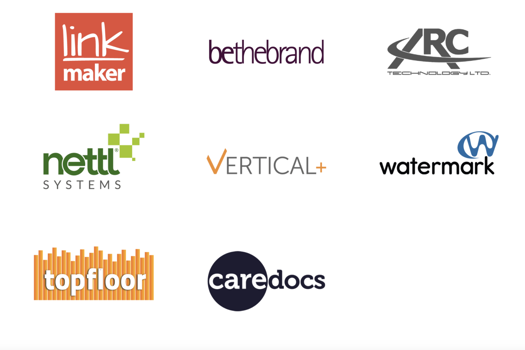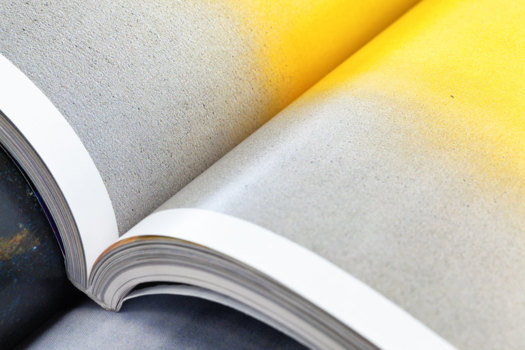We know that, at some point, printers will move to UV. When they do, we want them to migrate to the Uvistar, says Fujifilm Sericol marketing manager Tudor Morgan.
Fujifilm Sericol has built up quite a big share of the roll-to-roll solvent market, with its aftermarket ink Color+ installed across Europe in around 400 machines. UV ink is not new to the sector but, in the past, a price premium and a problem with adhesion onto flexible substrates restricted its uptake.
That’s changing, with prices coming down and the flexibility issue being addressed. Also, the trend towards polyethylene (PE)-based billboards favours UV, as you can’t print onto PE using solvent.
PE has revitalised this market, says Fujifilm Sericol European sales director Dave Burton.
High-quality option
PE’s adoption has increased in response to brands’ desires for a higher quality print and the tendency towards one-piece and backlit displays. While PVC can deliver one-piece and backlit posters, it’s trumped by PE when it comes to strength, weight and recyclability. Although the use of PE is rising, it still makes up a relatively small proportion of the poster market.
Only around 10% of poster sites today are PE and, with the small number of firms currently addressing the market, it represents a massive opportunity, says Morgan.
However, in order to succeed, the Uvistar needs to have more than one application. It is something Fujifilm Sericol says it has already addressed.
Just because it’s good at billboards, it doesn’t mean it doesn’t have a wide range of capabilities, says Burton. The first time I saw it, I was impressed with its versatility. It can handle everything from crashing out one-piece PE posters to boutique work, where it’s particularly good at chopping and changing between substrates. For the printer currently changing rolls four or five times per day, that’s significant.
Morgan adds: Customers buying the 3m machine will definitely want to produce more than just posters. They will want to produce point-of-sale, backlit and exhibition graphics. The quality has to be good enough for those applications.
Another point in its favour in a cost-concious market is that it wastes less substrate than rivals – only 35cm – when other machines may need a metre or more.
Unique selling points
While in the UK, the initial push will be into the billboards market, Burton has found that the sweet spot for the Uvistar can vary from country to country.
The ink is very flexible and low odour, he says. In Germany, it’s proving popular for fabric printing, especially soft signage. There the number one issue is low odour. Products have to be low odour if they are for soft signage in shops and restaurants – it makes a huge difference.
It is Fujifilm Sericol’s hope that the ink developed for Uvistar will set the product apart from its rivals.
We identified the problem that other inks had when printing onto PE were scratch and water resistance, says Morgan.
The QK inks use the firm’s Micro V technology and were in development for a couple of years. The firm worked hard to make them tough and flexible enough to cope with the demands of the sector. Handily, given the current cold snap and the opportunity in markets such as Russia, they also managed to make them withstand the cold.
In addition, the company says that the inks’ high optical density produces punchier colours, which, they claim, means users can save money by laying down 30-40% less ink to get the same result as rival products.
We’ve run test files on rival machines and, when you compare the output to the Uvistar, we have the edge on quality and speed, says Morgan. According to UK customers who’ve seen the output, our one-pass work is sellable in the
billboard market.
However, most firms opt to use the brighter inks to add impact, rather than just cut costs.
The ink mileage is good, but once they’ve seen samples, most customers want brighter colours, which brings the mileage down a little, he says. But even with the brighter result, ink costs will be 20% below that of rivals.
As the machine was originally designed as a hybrid – although Fujifilm Sericol has decided not to offer the table that enables it to handle rigid sheets – it can handle a wide range of substrates up to 250m thick – should you find anything so thick on a roll – and the thinnest and flimsiest stocks, such as woven PE fabrics, present no problem either.
For very thin and sensitive stocks you can raise the central section of the print area to keep tension up, says Morgan. We haven’t come across any type of media that we can’t handle.
Proven history
The printer itself is made by Israeli firm Matan Digital Printers, which sells the product under its own brand as the Barak. Matan has a strong pedigree – over the years it has engineered some of the most successful grand-format machines in the market.
We looked at OEM machines, but the Barak ticked more of the boxes for us, says Morgan. Fujifilm Sericol says the Uvistar is distinguished by its Uvijet inks and the firm’s distribution and application support clout.
However, despite carrying the Fuji badge, it uses Ricoh heads, rather than Fuji’s Dimatix heads.
Ricoh heads are an industrial head with a good droplet size, says Morgan. The same head is used in a lot of hybrid machines and it is very robust. We were impressed by the quality and reliability.
The Ricoh heads are binary – that is, they have a single fixed droplet size, rather than the newer greyscale heads capable of producing different droplet volumes. The droplet size is 30pl and the resolution is 600dpi. Morgan argues that for the applications it will be serving, it doesn’t need a greyscale head.
Elsewhere, Matan has taken a different approach in engineering the machine to avoid vibrations.
Conventional wisdom is you deal with vibration by using heavy materials, says Morgan. Matan’s approach is to use lightweight materials, but to engineer them to act as dampers to absorb vibrations.
The result is a machine that, at 5.9tonnes, is half the weight of some rivals. And it’s also priced to be lighter on the pocket than most rivals.
It may not weigh much, but the flexibility and build quality combined with the Uvijet QK inks make the Uvistar a production heavyweight.
SPECIFICATIONS
Print width
UVR 5032/5016: 5m
UVR 3532/3516: 3.5m
Max media thickness 250mm
Ink Uvijet QK flexible UV-cured
Ink colours CMYK
Max resolution 600dpi
Substrates polyethylene (PE), PVC (vinyl), textiles
Speed
UVR 5032: 316sqm/hr
UVR 5016: 172sqm/hr
UVR 3532: 260sqm/hr
UVR 3516: 148sqm/hr
Price
UVR 5032: £250,000
UVR 5016: £199,000
UVR 3532: £210,000
UVR 3516: £180,000
Contact Fujifilm Sericol 01992 782602 www.fujifilmsericol.com
ALTERNATIVES
Agfa Jeti
Having completed its acquisition of Gandinnovations, Agfa now has the Galaxy and JetSpeed range of roll-to-roll UV machines in 3m and 5m widths. However, no decisions have been made on which models will continue, or on pricing.
Print width 5.1m
Speed up to 280sqm/hour
Price tbc
Contact Agfa Graphics UK 020 8560 2131 www.agfa.com
Durst Rho 320R and Rho 500R
Using Durst’s own Quadro Array printheads and linear motors, the firm says the Rho R range offers accuracy and quality with high productivity and reliability. Multiroll and double-sided printing with the choice of light cyan and light magenta, or white and UV varnish in addition to CMYK.
Print width 20R: 3.2m; 500R: 5m
Speed 320R 130sqm/hr; 500R 500sqm/hr
Price 320R €350,000 (£307,000); 500R € 500,000
Contact Durst UK 01372 388540 www.durst-online.co.uk
EFI Vutek GS 5000r
The GS has eight ink channels can be configured with CMYK and light CMYK for close-viewed quality print or two sets of CMYK (so-called Fast4) for billboard throughput at up to 288sqm/hr. Users can switch between 1,000dpi with 12pl drops or 6,00dpi with 24pl drops. For narrower widths, Vutek offers the 3.2m-wide QS 3250r.
Print width 5m
Speed 288sqm per hour
Price £394,000
Contact EFI Vutek 07887 842786 www.efi.com
HP Scitex 2300 & 5300
Nur’s Expedio, predecessor to the 2300 and 5300, was the first roll-to-roll to use UV ink, so these machines have heritage and a big installed base. HP says its ink is capable of handling PE and that its billboard ink gets double the typical area per litre at 180sqm/litre, which contributes to low running costs.
Print width 5300: 5m; 2300: 3.2m
Speed 5300 300sqm/hr; 2300: 233sqm/hr
Price 2300: £274,000; 5300: £314,000
Contact HP 0800 520 0431 www.hp.com/uk/portfolio
WP Virtu RS35
UK dealer DPI says that the Virtu delivers the right combination of flexibility, speed, quality and versatility needed in a 5m machine today, which needs to be able to produce exhibition graphics and PoS as well as billboards onto a range of substrates including PE and fabrics. Available in four or six colours plus white.
Print width 5m
Speed 330sqm per hour
Price £285,000
Contact DPI 01332 856355 www.dpi-uk.com










